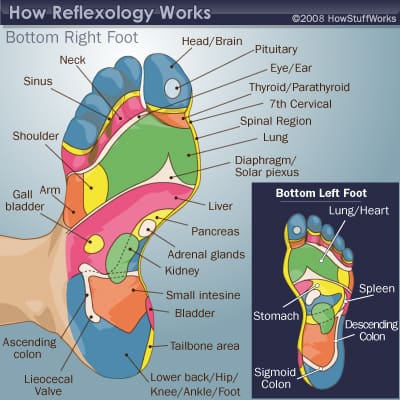
Reflexology has its origins in ancient China and is believed to go back to 2330BC. There is also evidence of foot massage on the pyramids of ancient Egypt so it seems it was in general use in ancient times. Zone Therapy advanced the idea that the body had ten longitudinal zones that ended in various areas of the feet and hands. Reflexology, as we know it today, is based on Zone Therapy which was already in general use in 1500AD.
Reflexology revolves around the charted areas of the foot as shown in this infographic. The chart shows where organs connect to various areas on the foot. The reflexologist targets certain pressure points to relieve discomfort in the areas of the body related to it.
Reflexology is regarded as an art and a science–science because it requires some knowledge of physiology and art because the reflexologist has practiced the knowledge of foot massage by using specific techniques that offer the required relief.
Reflexology started in the medical profession but is now considered a complementary treatment. Reflexologists believe that applying pressure to regions in the feet, hands, and ears can offer benefits. There is little research to support the benefits of reflexology but massage is relaxing. So, the touch of the reflexologist may calm the nervous system and help to reduce stress and anxiety.





